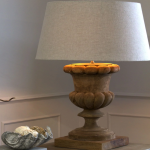Wabi-sabi is a Japanese aesthetic philosophy that celebrates the beauty found in imperfection, transience, and the natural cycle of growth and decay. Rooted in Zen Buddhism, this concept encourages individuals to appreciate the fleeting nature of life and the unique characteristics that come with age and wear. The term “wabi” refers to a rustic simplicity, while “sabi” denotes the beauty that comes with the passage of time.
Together, they create a profound appreciation for the imperfect and the ephemeral, inviting a sense of peace and acceptance into our lives. In a world increasingly dominated by mass production and uniformity, wabi-sabi offers a refreshing perspective. It invites us to slow down and observe the subtleties of our surroundings, finding beauty in the cracks of an old pot or the uneven surface of a handmade bowl.
This philosophy encourages mindfulness, urging us to engage with our environment in a more meaningful way. By embracing wabi-sabi, we can cultivate a deeper connection to our possessions and surroundings, fostering a sense of gratitude for the unique stories they tell.
Embracing Imperfection in Design
In design, wabi-sabi manifests as an aesthetic that values authenticity over perfection. This approach encourages designers to incorporate elements that reflect the natural world, such as organic shapes, asymmetry, and textures that evoke a sense of history. Rather than striving for flawless finishes or rigid symmetry, wabi-sabi design embraces the quirks and irregularities that make each piece unique.
This philosophy can be seen in various design disciplines, from architecture to furniture making, where the focus shifts from creating pristine objects to celebrating their inherent imperfections. For instance, consider a handcrafted ceramic vase with an uneven rim or a slight glaze imperfection. Instead of detracting from its value, these characteristics enhance its charm and individuality.
Designers who adopt wabi-sabi principles often seek materials that age gracefully, such as reclaimed wood or weathered metals, which tell a story through their wear and patina. This approach not only results in visually striking pieces but also fosters a deeper emotional connection between the object and its owner, as each imperfection becomes a testament to its journey through time.
The Art of Wabi-Sabi in Wooden Chandeliers
Wooden chandeliers Hongfu exemplify the wabi-sabi aesthetic beautifully, merging functionality with artistry in a way that highlights the natural beauty of wood. Each chandelier tells its own story through the unique grain patterns, knots, and textures found in the wood. When crafted with care and intention, these fixtures become more than mere sources of light; they transform into focal points that evoke warmth and character within a space.
The organic forms often seen in wooden chandeliers reflect the natural world, creating an inviting atmosphere that resonates with the principles of wabi-sabi. The process of creating a wooden chandelier can itself embody wabi-sabi principles. Artisans may choose to leave certain elements raw or unrefined, allowing the natural imperfections of the wood to shine through.
This could mean preserving the rough edges or incorporating branches and twigs into the design, resulting in a piece that feels alive and connected to nature. Such chandeliers not only illuminate a room but also serve as reminders of the beauty found in nature’s imperfections, encouraging those who encounter them to appreciate the transient beauty of life.
Finding Serenity in Imperfect Beauty
The allure of wabi-sabi lies in its ability to evoke serenity through imperfect beauty. In a fast-paced world filled with constant distractions and pressures to conform to idealized standards, embracing wabi-sabi can provide a much-needed respite. The philosophy encourages individuals to find solace in simplicity and authenticity, allowing them to cultivate a sense of inner peace amidst chaos.
By recognizing that perfection is an illusion, we can learn to appreciate the beauty inherent in our flaws and those of others. This journey toward acceptance often begins with mindfulness practices that encourage us to slow down and observe our surroundings without judgment. Whether it’s taking a moment to admire the weathered surface of an old table or appreciating the asymmetrical shape of a handmade ceramic bowl, these small acts can foster a deeper connection to our environment.
As we learn to embrace imperfection, we may find ourselves more open to experiencing joy in everyday moments—transforming mundane tasks into opportunities for reflection and gratitude.
Wabi-Sabi and the Japanese Aesthetic
Wabi-sabi is deeply intertwined with traditional Japanese aesthetics, which emphasize harmony with nature, simplicity, and an appreciation for the ephemeral. This philosophy is evident in various aspects of Japanese culture, from tea ceremonies to garden design. In these practices, there is often a focus on creating spaces that reflect natural beauty while encouraging contemplation and mindfulness.
The principles of wabi-sabi resonate strongly within these cultural expressions, highlighting the importance of finding beauty in simplicity and impermanence. In Japanese gardens, for example, one might encounter carefully arranged stones, moss-covered paths, and weathered wooden structures that embody wabi-sabi ideals. These elements work together to create serene environments that invite reflection and connection with nature.
Similarly, traditional Japanese tea ceremonies emphasize the beauty of simplicity and imperfection through handcrafted utensils and rustic settings. Each element is chosen not only for its functionality but also for its ability to evoke a sense of tranquility and appreciation for life’s fleeting moments.
Creating a Wabi-Sabi Atmosphere with a Wooden Chandelier
To create a wabi-sabi atmosphere using a wooden chandelier, one must consider how this piece interacts with its surroundings. The key lies in selecting a chandelier that embodies natural materials and organic forms while harmonizing with other elements within the space. A well-crafted wooden chandelier can serve as a stunning focal point that draws attention without overwhelming the room’s overall aesthetic.
Its presence should evoke warmth and comfort, inviting occupants to appreciate both its beauty and imperfections. Incorporating complementary decor elements can further enhance this atmosphere. For instance, pairing the chandelier with rustic wooden furniture or handmade ceramics can create a cohesive look that celebrates authenticity.
Soft lighting can also play a crucial role; warm bulbs can cast gentle shadows that highlight the chandelier’s unique features while creating an inviting ambiance. By thoughtfully curating these elements, one can cultivate a space that embodies wabi-sabi principles—an environment where serenity reigns and imperfections are celebrated.
The Timeless Appeal of Wabi-Sabi Design
The timeless appeal of wabi-sabi design lies in its ability to resonate across cultures and eras. As society becomes increasingly enamored with minimalism and sustainability, wabi-sabi offers an alternative perspective that values history and character over sleekness and uniformity. This aesthetic encourages individuals to seek out pieces that tell stories—objects that have been shaped by time and experience rather than mass-produced items devoid of personality.
Moreover, wabi-sabi’s emphasis on sustainability aligns seamlessly with contemporary values surrounding environmental consciousness. By choosing handcrafted items made from natural materials or repurposing vintage pieces, individuals can create spaces that reflect their commitment to sustainability while embracing the beauty of imperfection. This approach not only fosters a deeper connection between people and their possessions but also contributes to a more mindful way of living—one that honors both nature and craftsmanship.
Incorporating Wabi-Sabi into Your Home Decor
Incorporating wabi-sabi into home decor involves more than just selecting specific items; it requires cultivating an overall mindset that values authenticity and simplicity. Start by assessing your existing decor—identify pieces that resonate with you on an emotional level or tell a story about your journey. Consider introducing handmade items or vintage finds that showcase unique characteristics rather than opting for mass-produced alternatives.
When arranging your space, prioritize balance over perfection. Embrace asymmetry by grouping items of varying heights or textures together; this creates visual interest while reflecting the natural world’s unpredictability. Additionally, allow for negative space—areas devoid of clutter—that invites calmness into your environment.
By thoughtfully curating your decor with wabi-sabi principles in mind, you can create a home that feels both inviting and deeply personal—a sanctuary where imperfections are celebrated as integral parts of life’s beautiful tapestry.



